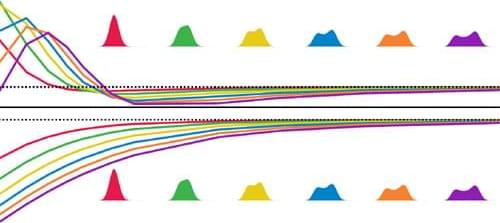A venerable strategy for approximating a system’s ground states has now been extended to accommodate its excited states.
Density-functional theory (DFT) owes its name and utility to its central insight: that a potential’s influence on a system of interacting electrons can be expressed in terms of the electrons’ density. Existing models restrict DFT to ground states and exclude excited states. But now Tim Gould of Griffith University, Australia, and his collaborators have found a way to overcome the restriction [1].
At the heart of DFT are exchange-correlation models, which simplify the treatment of electrons’ behavior by using certain limiting cases. This simplification allows DFT to simulate ground states of large electronic systems. A generalization of the theory, called ensemble DFT, can cope with excited states, but this theory’s more complex exchange-correlation models make large systems computationally intractable. Gould and his collaborators discovered that when the electron density is sufficiently low, these complications vanish and the models for dealing with excited states revert to being as simple as those used for regular DFT. Then, regular DFT suffices. At the other extreme—when electron density is high—complications are simplified to the point that exact solutions can be obtained.
